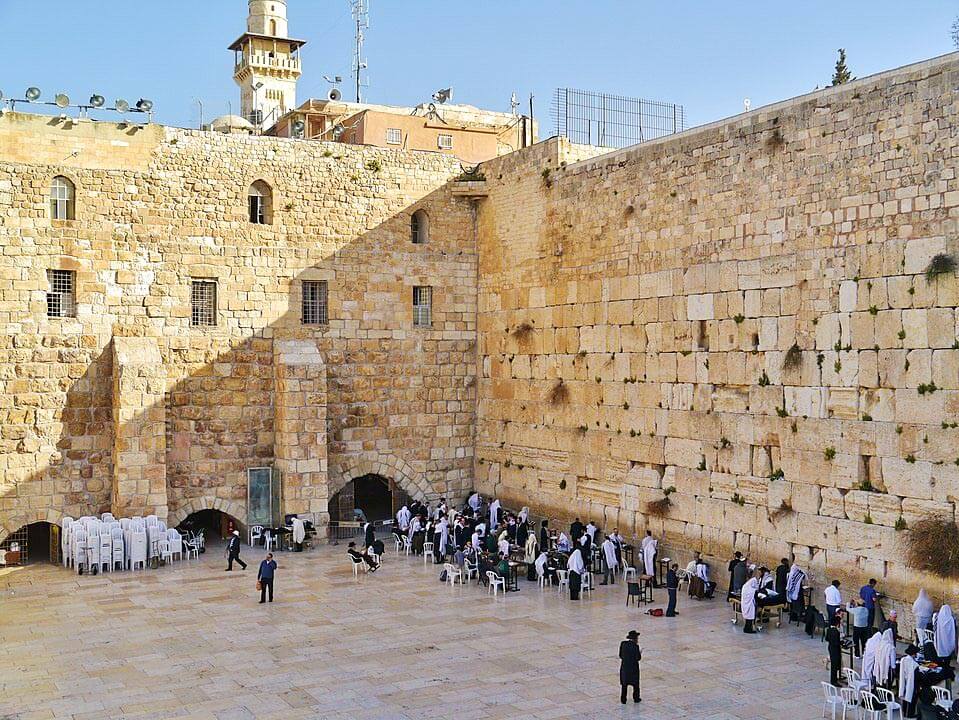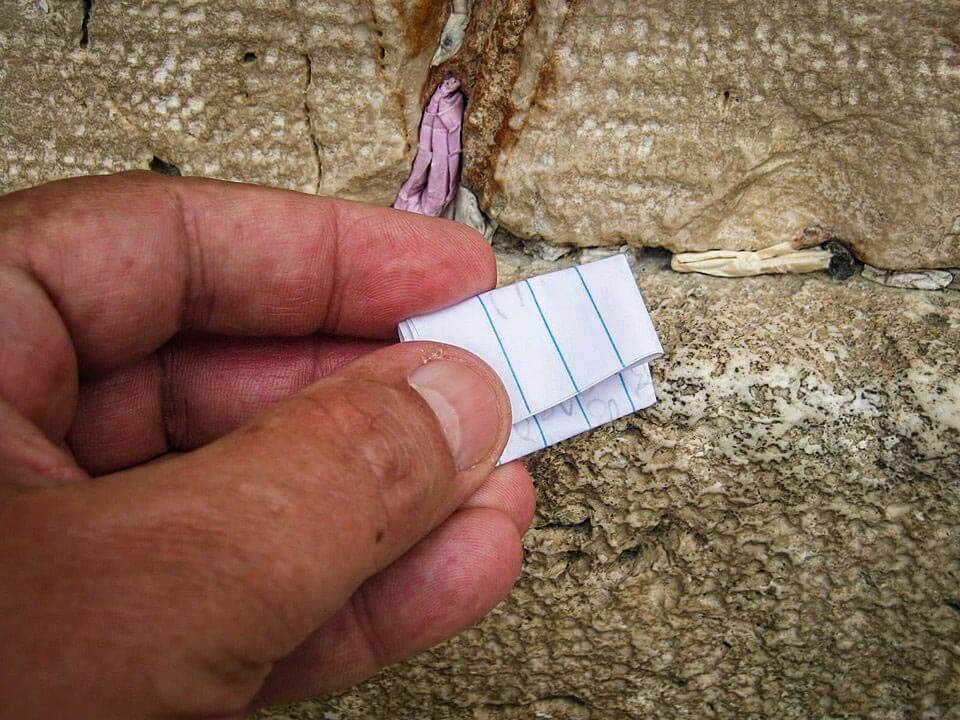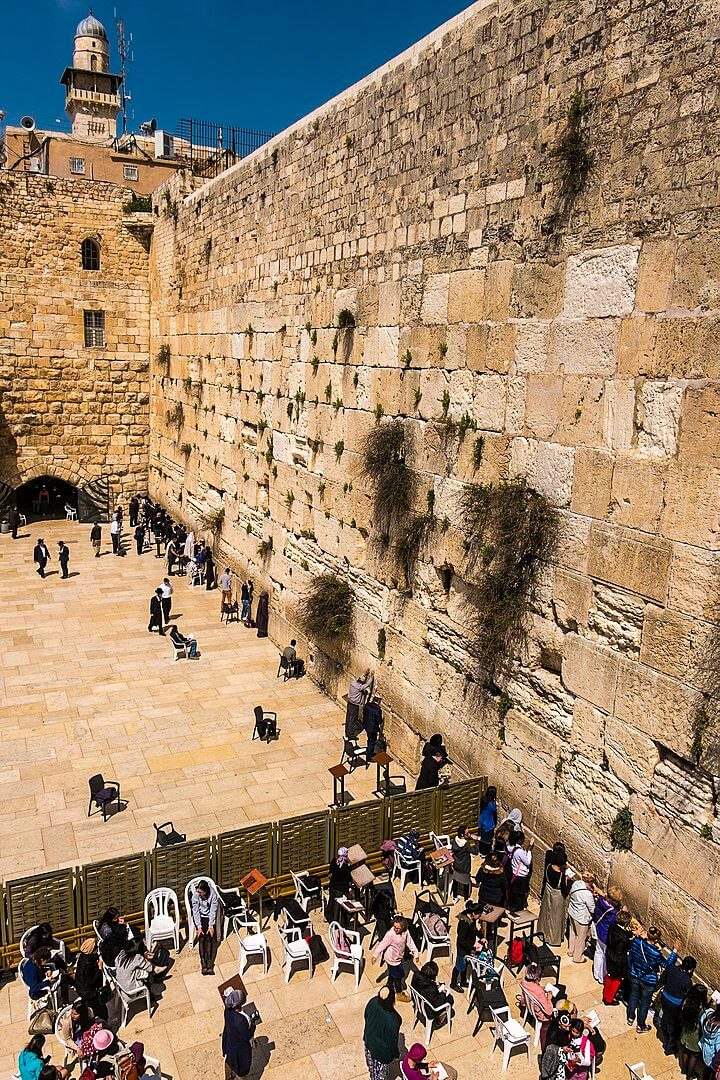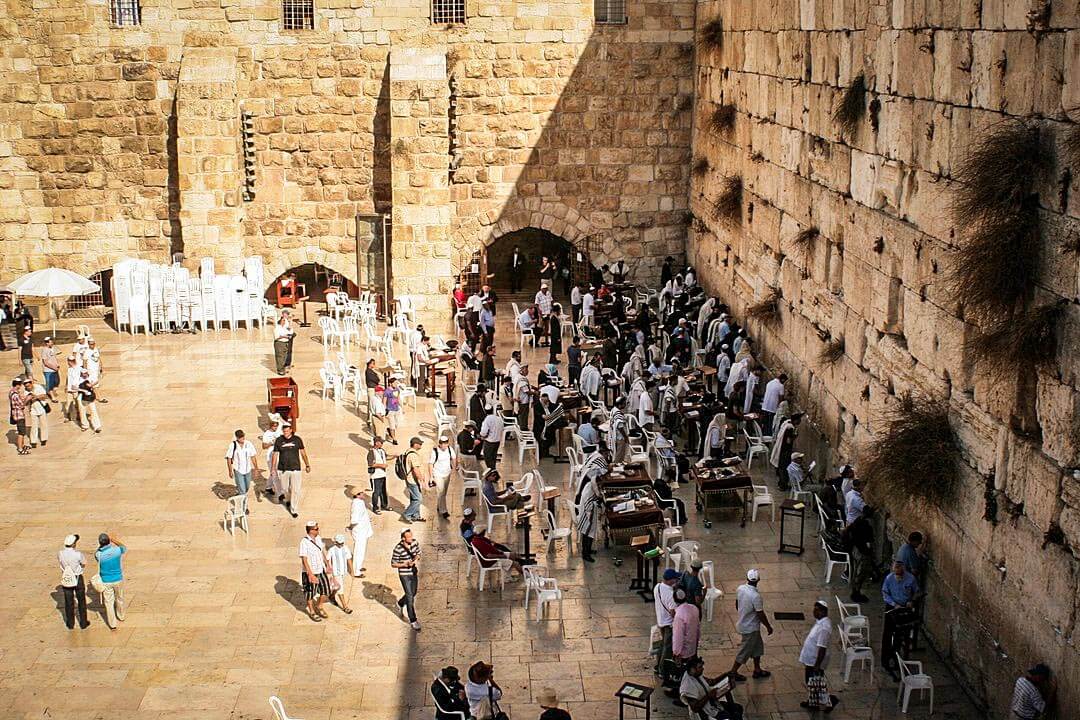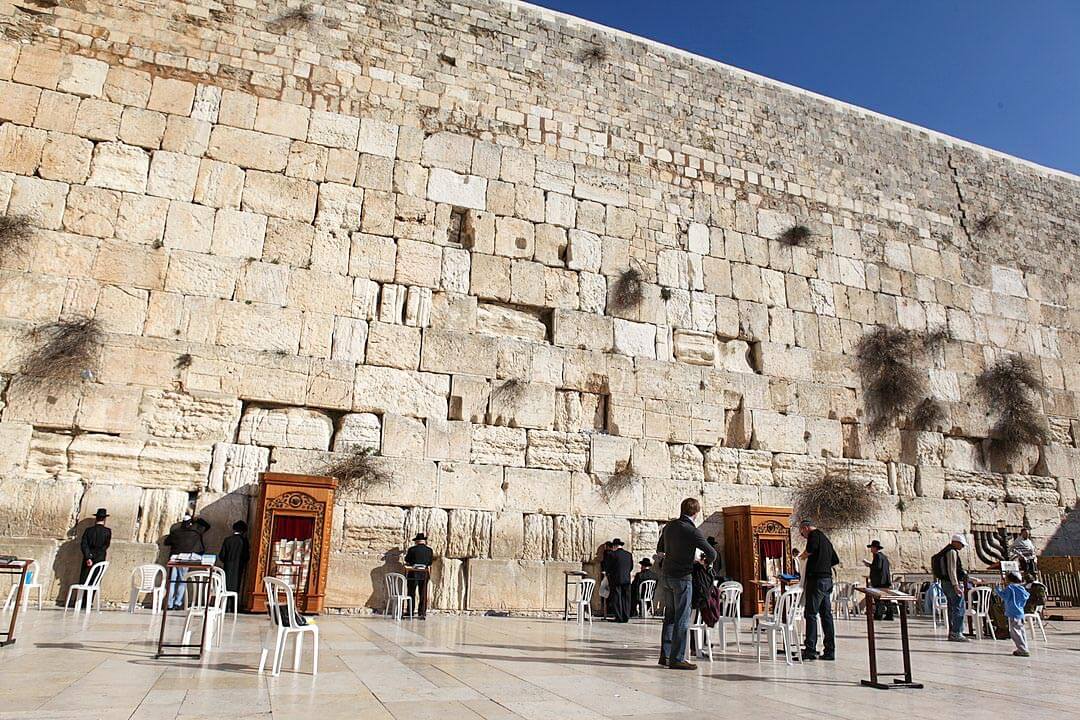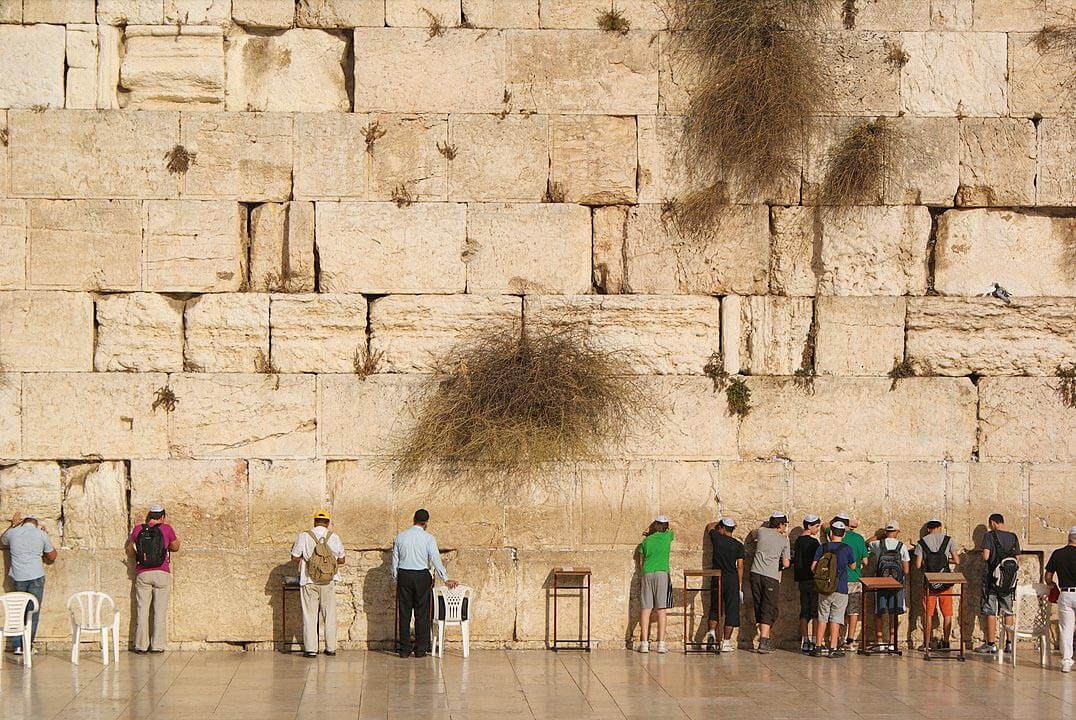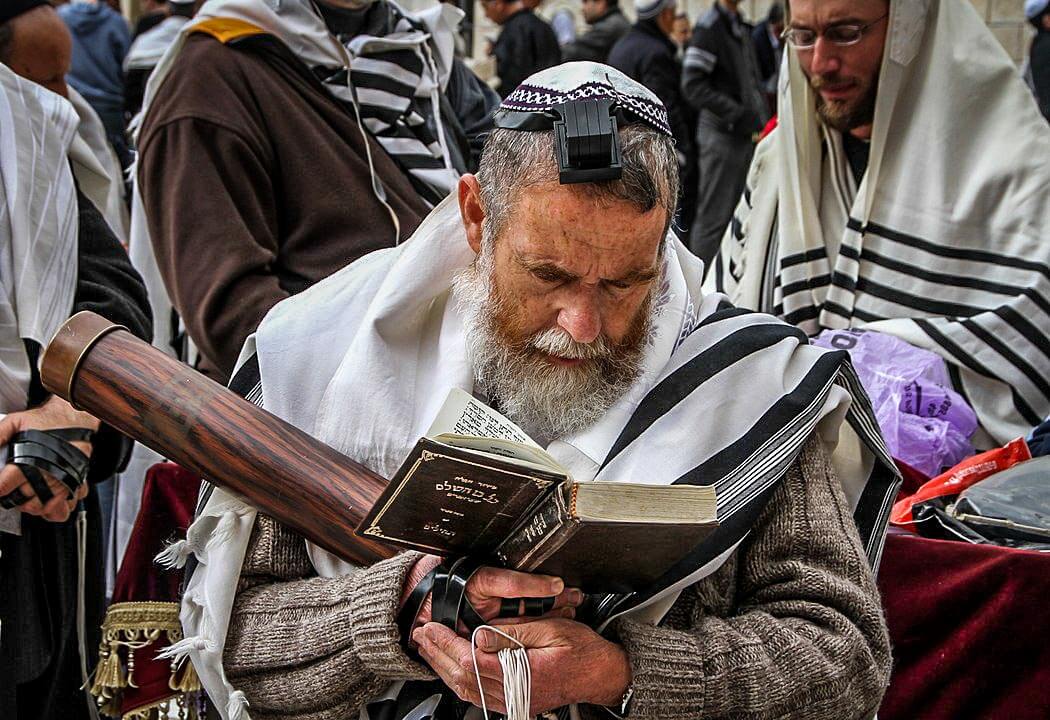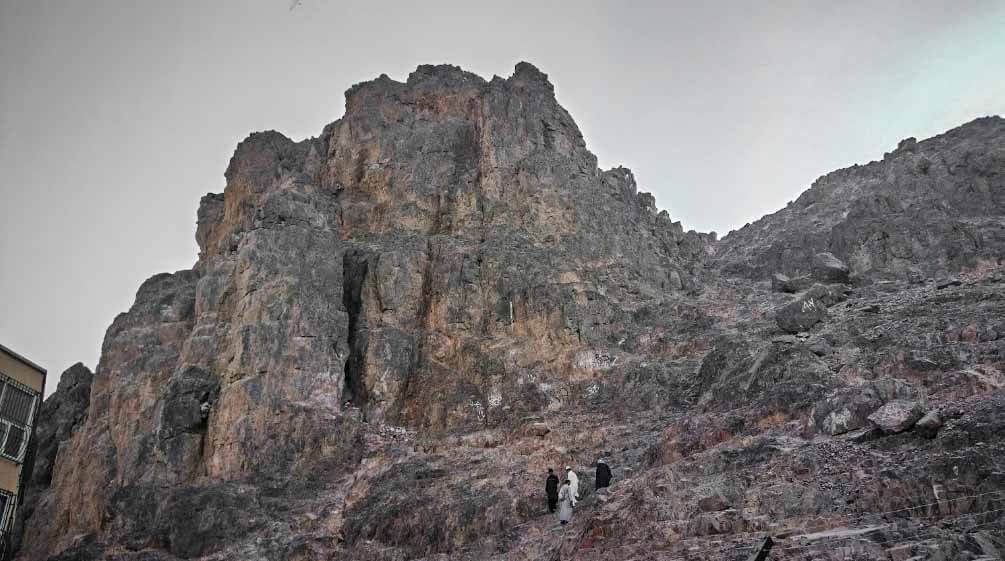Jerusalem, Palestine
Coordinates: 31.776670, 35.234250
The name Buraq Wall is based on the tradition that inside the wall is the place where Hz. Prophet Muhammad ﷺ tethered his miraculous winged steed, al-Buraq.
The location of the entry gate is identified as to the western wall, and specifically to Barclay’s Gate immediately adjacent to the “Wailing Place” of the Jews.
Story Narration
The entire area of the Haram Al-Sharif is closely connected with Hz. Prophet Muhammad ﷺ.
The basis for this assertion is provided by the Qur’an:
“Glory Be to Him Who made his servant to go on a night from the sacred Mosque to the remote Mosque”.
(Sura 17: Verse 1)
Narrations fron Hadiths which are corroborated by stories from the Life of the Prophet, relate that He ﷺ arrived in Jerusalem by flying on the back of his horse, “al-Buraq”, who had the head of a woman.
There, in the remote Mosque He prayed, together with Hz. Ibrahim عليه اسلام, Hz. Musa عليه اسلام, Hz. Sulaiman عليه اسلام and Hz. Isa عليه اسلام.
After that He climbed up on to a golden leather throne and ascended to Paradise. Then He remounted al-Buraq and returned to Mecca sharif the same night.
Traces of this nocturnal journey, as reflected in the popular tradition, are kept on the west side of the Rock, while Hz. Prophet Muhammad’s ﷺ footprints are on the southeast corner of the Rock.
Until June 1967 it was possible to reach an exposed part of the Wall of al-Buraq (the length of which at that time was about 28m) through alleyways and passages in the Moroccan quarter.
Description of Al Buraq
In one narration it is said that Jibra’il عليه السلام brought the Buraq, handsome-faced and bridled, a tall, white beast, bigger than the donkey but smaller than the mule. His step (was so wide that it) could reach the farthest point within the reach of his sight. He had long ears. Whenever he faced a mountain his legs would extend, and whenever he went downhill his front legs would extend. He had two wings on his thighs.
Was Al Buraq Female?
Although in many earlier descriptions there is no agreement as to the fact that buraq was male, Ibn Sa’d has Jibra’il عليه السلام address the creature as a female, and it was often rendered by painters in the Persian and eastern art with a woman’s head.
What is the speed of al Buraq?
One of the posts on quora said that it is 10miles/sec, but it is simply not true. It is impossible to reach even to the nearest heaven at that speed in one night because the closest star, Proxima Centauri, is 9.44 trillion km, or 5.88 trillion miles away from us.
Have Buraq transported other Prophets as well?
According to Ibn Ishaq, the Buraq transported Ibrahim عليه السلام when he visited Hagar عليها اسلام and Ismael عليه السلام. The narration states that Ibrahim عليه السلام lived with Sarah عليها اسلام in Palestine but the Buraq would transport him in the morning to Mecca to see his family there and take him back in the evening.
Is Buraq human faced?
Although the Hadith does not explicitly refer to the Buraq as having a human face, Near East and Persian art almost always portrays it so – a portrayal that found its way into Indian and Persian Islamic art.
Did al Buraq Talked to the Prophet ﷺ
Al-Buraq was brought to the Prophet ﷺ on the Night of Isra and Mi’raj, saddled and reined, but he shied (bucked) from him. So Jibra’il عليه السلام put his hand on his mane and said: “Are you not ashamed, O Buraq? By Allah, no-one has ridden you in all creation dearer to Allah than he is.” Hearing this he was so ashamed that he sweated until he became soaked, and he stood still so that the Prophet ﷺ mounted him.
Where is the place where Al-buraq was tied?
In a narration from Jami Tirmidhi Prophet Muhammad ﷺ said: “When we reached Bait Al-Maqdis, Jibra’il عليه السلام pointed with his finger causing a crack in the rock, and he tied Al-Buraq to it.
This is a small underground mosque that is open during the day. This is the location the Prophet ﷺ tied the Buraq before embarking on the Night Journey. The location is in fact the internal side of the Wailing Wall (Western Wall), hence for Muslims, this is known as the “Buraq Wall”. There is a ring attached to the wall from Ottoman times to mark the approximate area that the Buraq was tied.
Why was Al buraq fettered
Hudhaifah رضي الله عنه after narrating the Miraj journey said that they (Prophet Muhammad ﷺ and Jibra’il عليه السلام) returned back to where they began. He (Hudhaifah رضي الله عنه) said: ‘They say that he was fettered, but for what? Because he might flee? The Knower of the unseen and the witness subdued him.
Bab an-Nabi
Barclay’s Gate lies under the Moroccans’ Gate (Moor’s Gate) and is one of the four Haram as sharif (what the jews call temple mount) original gates on its western side. Its Arabic name is Bab an-Nabi, Gate of the Prophet Muhammad ﷺ (not to be confused with the gate no.14 Bab-an-nabi of Masjid al haram)
Who is it named after?
Barclay’s Gate is named after James Turner Barclay, an American delegate, who was a Christian missionary in Jerusalem in the mid-19th century, and who discovered the main structure of the gate buried underground within the Haram As sharif, in 1855.
When was it blocked?
The gate was blocked with stones at the end of the 10th century and the internal gate room was transformed into a mosque dedicated to Buraq. Today the room is closed and entrance to it is prohibited without the approval of the Waqf Board there.
The gate to enter the Haram as sharif today is above the Barclay’s Gate lintel and is called the Moroccans’ Gate. This large stone (which looks like a square) is itself about 21 feet long, 6.5 feet wide and weighs 50 tons. This stone was the massive lintel (or, top stone) that spanned a gate or entrance into the ancient temple of Herod’s day. The gate entrance was almost 27 feet high. The reverse L-shaped feature on the left wall is Barclay’s lintel. He discovered it from its inner side, within the Haram as sharif, in 1852.


